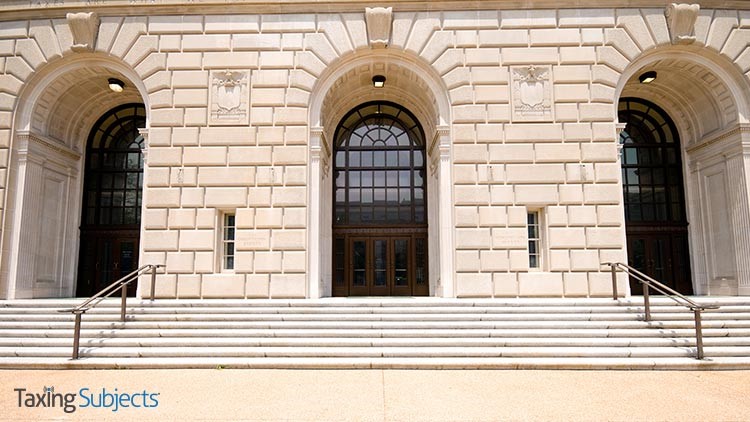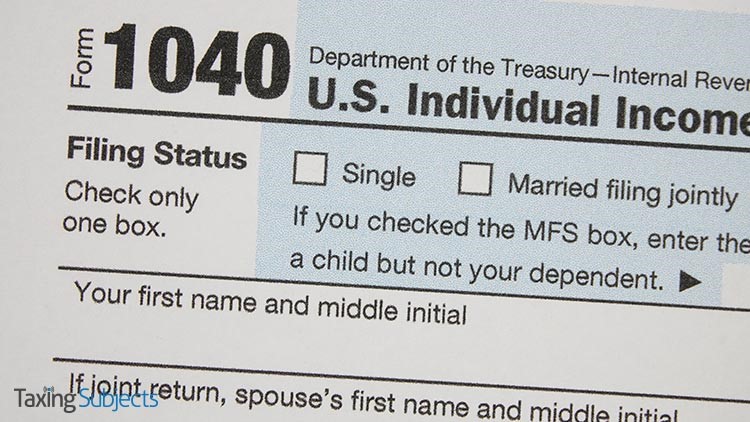by Ameritax | Dec 18, 2020 | Tax Tips and News
A government audit says that allowing taxpayers to electronically correct their returns is more than just good customer service—it’s good business.
The audit, performed by the office of the Treasury Inspector General for Tax Administration (TIGTA), found that allowing taxpayers to correct their e-filed returns just makes sense.
What did TIGTA find?
As of mid-December of 2019, the IRS accepted e-filed tax returns that contained more than 9 million identified errors. The audit says that adds weight to the push to expand the IRS’ error correcting system into the electronic realm.
“Providing taxpayers with the opportunity to self-correct errors on accepted e-filed tax returns can reduce taxpayer burden and improve the efficiency and effectiveness of tax return processing. When practical, providing taxpayers with the opportunity to self-correct and resubmit their e-filed returns can reduce delays in obtaining their refunds,” the audit states.
This, the Inspector General says, was especially true when considering the impact the COVID-19 pandemic had on IRS operations.
In addition, the audit determined the IRS isn’t using its own tax return data to solve tax errors in a systemic fashion. “TIGTA identified two error codes in which expanding the use of e-filed tax return data could prevent 537,769 e-filed tax returns from being identified for manual verification and result in an estimated cost savings to the IRS of $962,607 per year,” the audit reports.
The report also faults erroneous tax examiner entries for adding to the IRS burden and costs.
Analysis of Tax Year 2018 Child Tax Credit and Additional Child Tax Credit claims identified 8,397 tax returns for which taxpayers received $8 million more than they were entitled, and 12,147 tax returns for which taxpayers received $9.1 million less than they were entitled because of tax examiner errors in the verified fields.
Stop and go of new tax laws
Another problem occurs when a return has to be suspended during processing and reactivated. This, the audit points out happens when returns have to be suspended while the agency makes programming updates—such as those needed to implement changes in tax law late in the calendar year.
As of Feb. 15, 2020, the IRS suspended some 98,000 tax returns that contained tax extender items. But those returns had to be manually suspended and reactivated once the programming was done, at a cost of more than $176,000 to the IRS.
The IRS has an Error Resolution System (ERS). It’s tasked with identifying and addressing tax return errors made by taxpayers, tax preparers and IRS employees during the tax return process.
During the 2019 Filing Season, 13.9 million (9%) of the 155.8 million total individual tax returns filed were sent to the ERS for manual review. TIGTA’s audit was done to see just how well the ERS was performing.
What is the impact on taxpayers?
The ERS identifies errors on paper and e-filed tax returns. Tax returns flagged by the ERS stay in the inventory until a tax examiner takes initial action on all error conditions on the return.
For those tax returns with errors that require additional information from the taxpayer or additional research of other IRS systems, the tax examiner suspends the return from processing until the additional research is completed or a response is received from the taxpayer.
The Inspector General found a willing audience for the nine recommendations made by the audit report. The report generally seeks to improve the agency’s administration of the ERS program, including developing processes to provide taxpayers the opportunity to self-correct errors on accepted e-filed returns.
IN addition, the recommendations include stem-wide approach to the error resolution process addressing tax return errors. TIGTA also recommended devising processes and procedures to identify and correct tax examiner errors in verified fields.
IRS management agreed with all nine recommendations from TIGTA and said the IRS plans to take appropriate corrective action.
Source: “Expansion of Self-Correction for Electronic Filers and Other Improvements Could Reduce Taxpayer Burden and Costs Associated With Tax Return Error Resolution“
– Story provided by TaxingSubjects.com
by Ameritax | Dec 17, 2020 | Tax Tips and News
The Internal Revenue Service has issued Revenue Ruling 2021-01, which lays out the prescribed rates for various income tax purposes.
The ruling includes rates including those for applicable federal interest rates, adjusted applicable federal interest rates, the adjusted federal long-term rate, and the adjusted federal long-term tax-exempt rate.
The rates are determined as laid out in § 1274.
Setting the table for income taxes
The revenue ruling spells out the applicable interest rates in a series of tables:
- Table 1 contains the short-term, mid-term, and long-term applicable federal rates (AFR) for the current month for purposes of section 1274(d) of the Internal Revenue Code.
- Table 2 contains the short-term, mid-term, and long-term adjusted applicable federal rates (adjusted AFR) for the current month for purposes of section 1288(b). These rates are set at 0.11%; 0.39%; and 1.03%, respectively.
- Table 3 sets forth the adjusted federal long-term rate and the long-term tax-exempt rate described in section 382(f). The ruling sets both these rates at 1.03%.
- Table 4 contains the appropriate percentages for determining the low-income housing credit described in section 42(b)(1) for buildings placed in service during the current month. (However, under section 42(b)(2), the applicable percentage for non-federally subsidized new buildings placed in service after July 30, 2008, shall not be less than 9%.) These rates were set at 7.21% and 3.09%, depending on the percentage claimed.
- Table 5 contains the federal rate for determining the present value of an annuity, an interest for life or for a term of years, or a remainder or a reversionary interest for purposes of section 7520. For all these instances, the rate was set at 0.6%.
- Table 6 contains the deemed rate of return for transfers made during calendar year 2021 to pooled income funds described in section 642(c)(5) that have been in existence for less than 3 taxable years immediately preceding the taxable year in which the transfer was made.
The IRS says these rates are published monthly for purposes of sections 42, 382, 412, 642, 1288, 1274, 7520, 7872, and various other sections of the Internal Revenue Code.
The January rates for the coming year will appear in IRB 2021-02, dated Jan. 11, 2021.
Source: Rev Ruling 2021-01
– Story provided by TaxingSubjects.com
by Ameritax | Dec 15, 2020 | Tax Tips and News
The Internal Revenue Service has issued Notice 2020-86, addressing certain parts of the SECURE Act that affect safe harbor plans—including safe harbor 401(k) plans and some 403(b) plans.
The SECURE Act—also known as the Setting Every Community Up for Retirement Enhancement Act—was passed into law in 2019.
Not all 401(k) plans qualify
A safe harbor 401(k) plan is similar to a traditional 401(k) plan but is structured so that compliance testing can be avoided.
Among other things, a safe harbor 401(k) plan has to provide for employer contributions that are fully vested when they’re made. These contributions can be employer matching contributions, limited to employees who defer, or employer contributions made on behalf of all eligible employees, regardless of whether they make elective deferrals.
Notice 2020-86 is written in a question-answer format that aims to help small business and other employers who maintain safe harbor plans comply with the SECURE Act.
The automatic elective deferral cap has increased
In general terms, the new law increases the maximum automatic elective deferral under an automatic enrollment safe harbor plan from 10% to 15%. It also eliminates certain safe harbor notice requirements for plans providing non-elective contributions and adds new provisions for the retroactive adoption of safe harbor status of those plans.
The notice impacts certain safe harbor 401(k) and 401(m) plans – including 403(b) plans that apply the 401(m) safe harbor.
The IRS says the notice is intended to help taxpayers by providing guidance on particular issues while regulations are being developed to fully implement the SECURE Act provisions.
For more information, check IRS.gov.
Source: IR-2020-273
– Story provided by TaxingSubjects.com
by Ameritax | Dec 11, 2020 | Tax Tips and News
Final regulations have been issued on the deduction for qualified transportation fringe and commuting expense.
The new regulations were issued by the Internal Revenue Service and the Treasury Department to bring the tax code into line with changes made by the Tax Cuts and Jobs Act (TCJA).
The legislation that was passed into law in 2017 generally disallows deductions for qualified transportation fringe (QTF) expenses. It also does not permit deductions for certain expenses of transportation and commuting between an employee’s residence and place of employment.
The final regulations address the disallowance of the deduction for expenses as they relate to an employee of the taxpayer, and includes guidance and methods to calculate the amount of QTF parking expenses that is non-deductible.
The final regulations also spell out the disallowance of the deduction for expenses of transportation and commuting between an employee’s residence and their place of employment.
More information on the implementation of the Tax Cuts and Jobs Act can be found on the Tax Reform page of IRS.gov.
Some taxpayers notified they need to act on Qualified Opportunity Funds
The IRS is sending letters to some taxpayers, saying they need to do a little more work if they intend to self-certify as a Qualified Opportunity Fund, or QOF.
Taxpayers who attached or indicated they attached a Form 8996 to their return may get Letter 6250, Self-Certifying as Qualified Opportunity Fund. The letter lets them know that if they intended to self-certify as a QOF they may need to take additional action to meet the annual self-certification requirement.
In order to correct a 2018 self-certification as a QOF, a taxpayer should file an amended return or an administrative adjustment request (AAR).
If an entity receiving the letter fails to self-certify as a QOF, the IRS may refer the tax account for examination. Investors who made an election to defer tax on eligible gains invested in the entity could also be subject to examination for an invalid election.
In addition, taxpayers may get Letter 6251, Reporting Qualified Opportunity Fund Investments. This letter notifies taxpayers they may not have properly followed the instructions for Form 8949, Sales and Other Dispositions of Capital Assets, or don’t appear to have an eligible gain that would enable them to make a valid deferral election for gains invested in a QOF.
Taxpayers who intended to make a valid deferral election can file an amended return or an AAR.
Taxpayers who receive a letter but fail to act will lead the IRS to conclude the recipient may not have a qualifying investment in a QOF, and the account could be referred for examination. This in turn could result in the recipient owing taxes, interest and penalties on gains that were not properly deferred.
For more information, visit the Opportunity Zones page on IRS.gov.
Sources: IR-2020-274; IR-2020-275
– Story provided by TaxingSubjects.com
by Ameritax | Dec 10, 2020 | Tax Tips and News
The tax-filing season will be upon us before we know it, so the Internal Revenue Service is urging taxpayers to take actions now to help ensure they can file timely and accurate returns in 2021.
Things to consider
The IRS says there are some areas that taxpayers should give extra attention before filing. These topics include credits, deductions and refunds:
Recovery Rebate Credit/Economic Impact Payment. Taxpayers who received an Economic Impact Payment, should keep Notice 1444, Your Economic Impact Payment, with their 2020 tax records. They may be eligible to claim the Recovery Rebate Credit on their tax year 2020 federal income tax return if:
- they didn’t receive an Economic Impact Payment, or
- their Economic Impact Payment was less than $1,200 ($2,400 if married filing jointly for 2019 or 2018), plus $500 for each qualifying child they had in 2020.
If a taxpayer didn’t receive the full amount of the Economic Impact Payment for which they were eligible, they may be able to claim the Recovery Rebate Credit when they file in 2021. Individuals don’t need to complete information about the Recovery Rebate Credit on tax year 2020 Form 1040 or 1040-SR when filing in 2021, unless they’re eligible to claim an additional credit amount.
Interest on refunds is taxable. Taxpayers who got a federal tax refund in 2020 may have been paid interest. Refund interest payments are taxable and must be reported on federal income tax returns. In January 2021, the IRS will send Form 1099-INT to anyone who received interest totaling $10 or more.
Charitable deduction changes. New this year, taxpayers who don’t itemize deductions may be able to take a charitable deduction of up to $300 for cash contributions made in 2020 to qualifying organizations. For more information, read Publication 526, Charitable Contributions.
Refunds. The IRS always cautions taxpayers and tax pros alike that they shouldn’t rely on getting a refund by a certain date, especially when making big purchases or paying bills. Some returns might require additional review and so processing might take longer.
For example, the IRS and its partners in the tax industry continue to strengthen the security review process in an effort to help protect against identity theft and refund fraud.
Just like last year, refunds for returns claiming the Earned Income Tax Credit or Additional Child Tax Credit cannot be issued before the middle of February. This applies to the entire refund – including the portion not associated with these credits.
Get more information on steps taxpayers can take ahead of filing season at a special web page on IRS.gov. Other helpful resources include Publication 5348, Get Ready to File, and Publication 5349, Year-Round Tax Planning is for Everyone.
Source: IR-2020-272
– Story provided by TaxingSubjects.com






 Ameritax
Ameritax